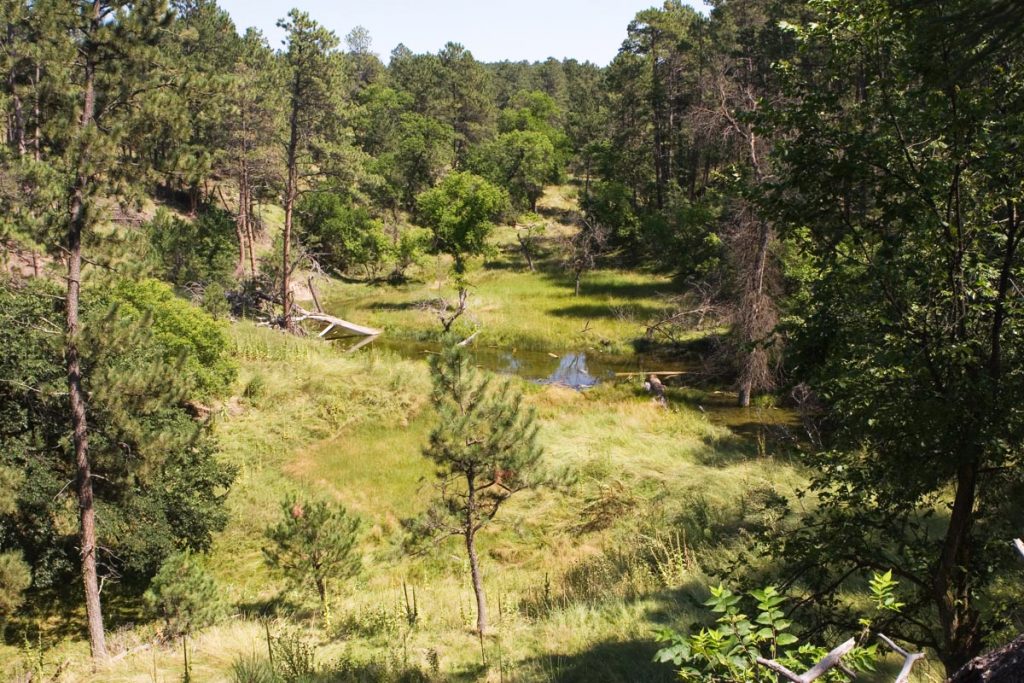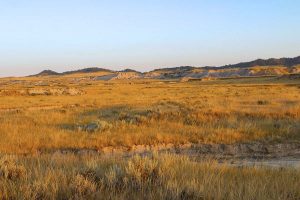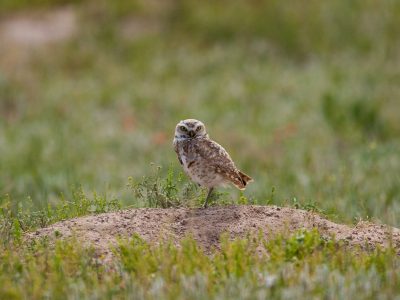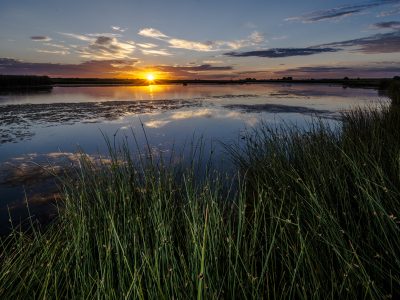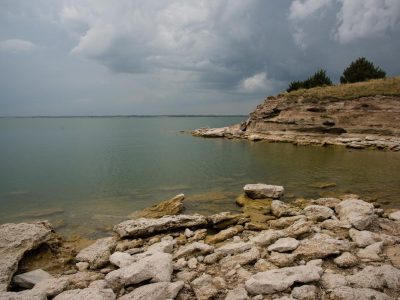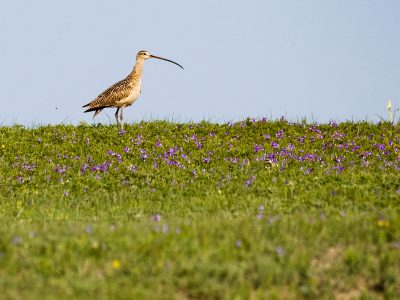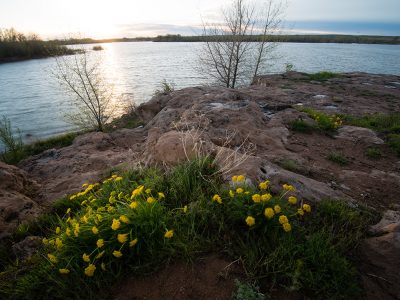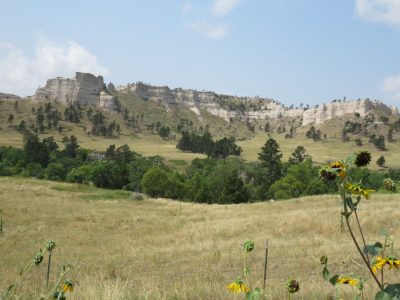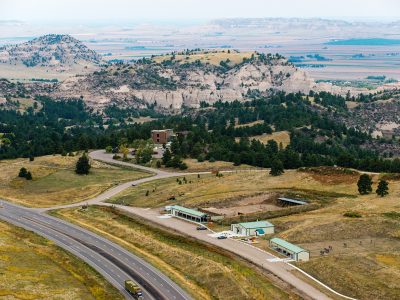Though referred to as the Shortgrass Prairie Ecoregion, much of western Nebraska supports dry mixed-grass prairie in addition to areas of shortgrass, sandsage prairie, pine forests, badlands, and other vegetation types. This ecoregion features diverse topography, including several areas of rocky escarpments. Soils range from sands to clays, with a greater variety of soil types than other ecoregions of the state. The North Platte River bisects the ecoregion and supports wet meadows, deciduous woodlands, and numerous tributary streams, many of which are cold-water.
The badlands are largely unvegetated but often have a sparse cover of low shrubs such as saltbush and rubber rabbitbrush. Rock outcrop communities are common on escarpments and include the point of highest elevation in the state. The ecoregion is rich with a diversity of grassland and forest birds as well as geological and historical sites.
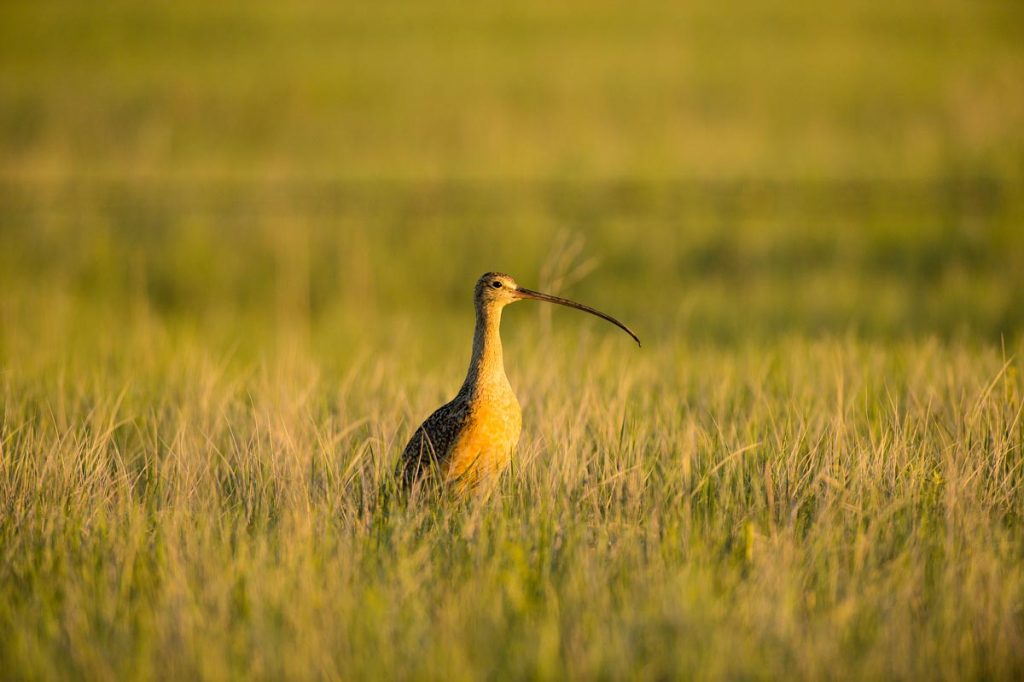
Characteristic birds
More than 300 species of resident and migratory birds have been recorded in the Shortgrass Prairie Ecoregion.
Common shortgrass prairie species include Thick-billed and Chestnut-collared Longspurs, Brewer’s Sparrow, Horned Lark, Burrowing Owl and the state threatened Mountain Plover.
Wetland Habitat
Due to the low precipitation in the ecoregion vegetation rarely exceeds 10 inches in height. Natural wetlands are somewhat limited in the ecoregion, though playa wetlands are abundant in areas of the southwest and are scattered northward. Along the floodplains of the North Platte River are western alkaline wetlands, like those found at Kiowa Wildlife Management Area (WMA). These wetlands frequently dry up from evaporation in this semi-arid region, leaving behind a white crust of alkaline salts on the soil surface. This ecoregion also has five large reservoirs, like Lake McConaughy, and several smaller artificial lakes that provide additional habitat for waterbirds. The ecoregion contains numerous small streams, many of which are ephemeral (may or may not be wet year-round). The region’s wetlands support many species of waterfowl including Canada Goose, Mallard, and Northern Pintail, and shorebirds such as Western Sandpiper and Greater Yellowlegs.
Open canopies of tall cottonwoods and shorter peachleaf willows dominate riparian woodlands in many stream valleys of the ecoregion. In the sub-canopies green ash, box-elder, russian-olive and junipers can be found. Riparian woodlands and shrub lands have become more prevalent along the North Platte River over the last half century because of dams reducing scouring flows.
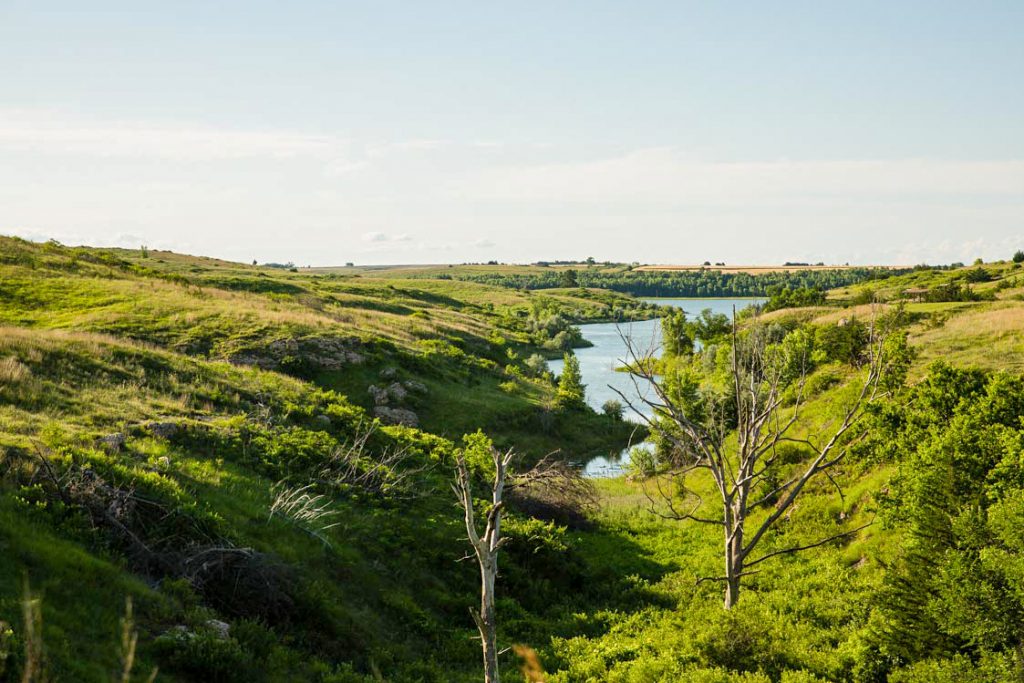
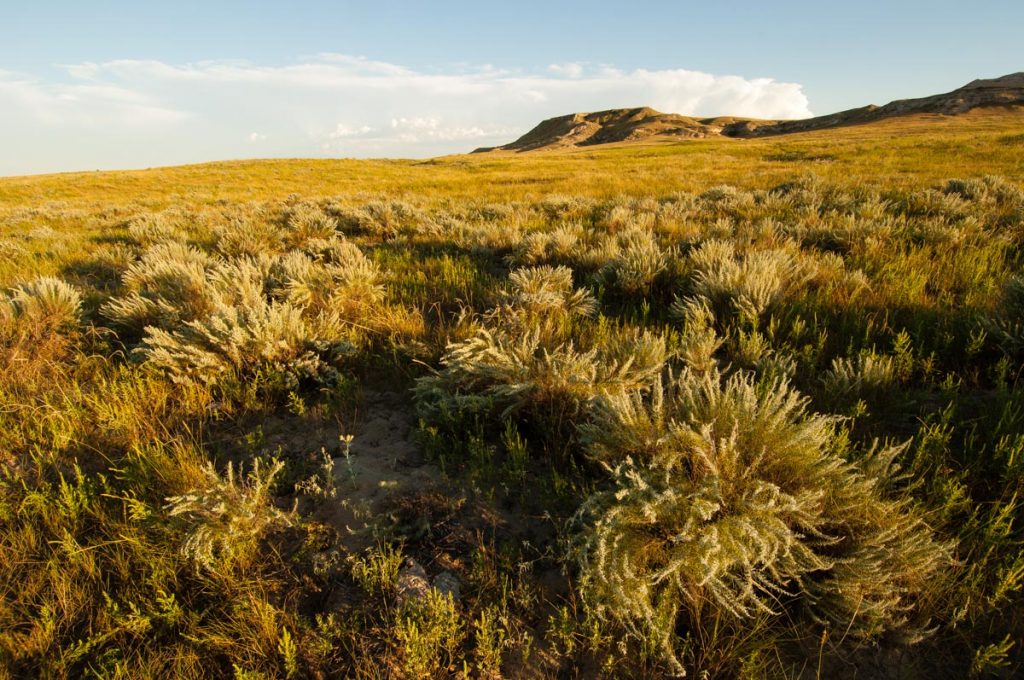
Sandsage Prairie Habitat
The sandsage prairie landscape is composed of low, rolling dunes and stream breaks in a four-county area in southwest Nebraska. While mixed-grass prairies occur on the breaks and bluffs of the Republican and Frenchman Rivers, sandsage prairie occurs on rolling sand dunes. The prairies are fragmented by center pivot development. This ecosystem is significant because it contains some of the highest quality loess mixed-grass prairies in the state. Due to the lowering of the groundwater table the lakes and wetlands in this ecoregion have all but disappeared. Visit Rock Creek Lake State Recreation Area in Dundy County for good birding opportunities in the sandsage prairie landscape.
Ponderosa Pine Habitat
The Ponderosa Pine-covered hills and escarpments of the Pine Ridge remind one of the Black Hills.
Some areas of the Pine Ridge have western mixed-grass prairie, ponderosa pine forest, dry-mesic ponderosa pine woodland, dry ponderosa pine open woodland and savanna. The diversity of habitats within the Pine Ridge, like those at Fort Robinson State Park, attract many different species of birds including Pygmy Nuthatch, Red Crossbill, Pinyon Jay, Plumbeous Vireo, Golden Eagle, and Mountain Bluebird.
The Ponderosa Pine forests of the Wildcat Hills escarpments are about 90 minutes south of the Pine Ridge and offer opportunities to observe pine forest specialties in a landscape otherwise dominated by prairie. Visit Wildcat Hills State Recreation Area for great birding opportunities in the pine forest habitat.
